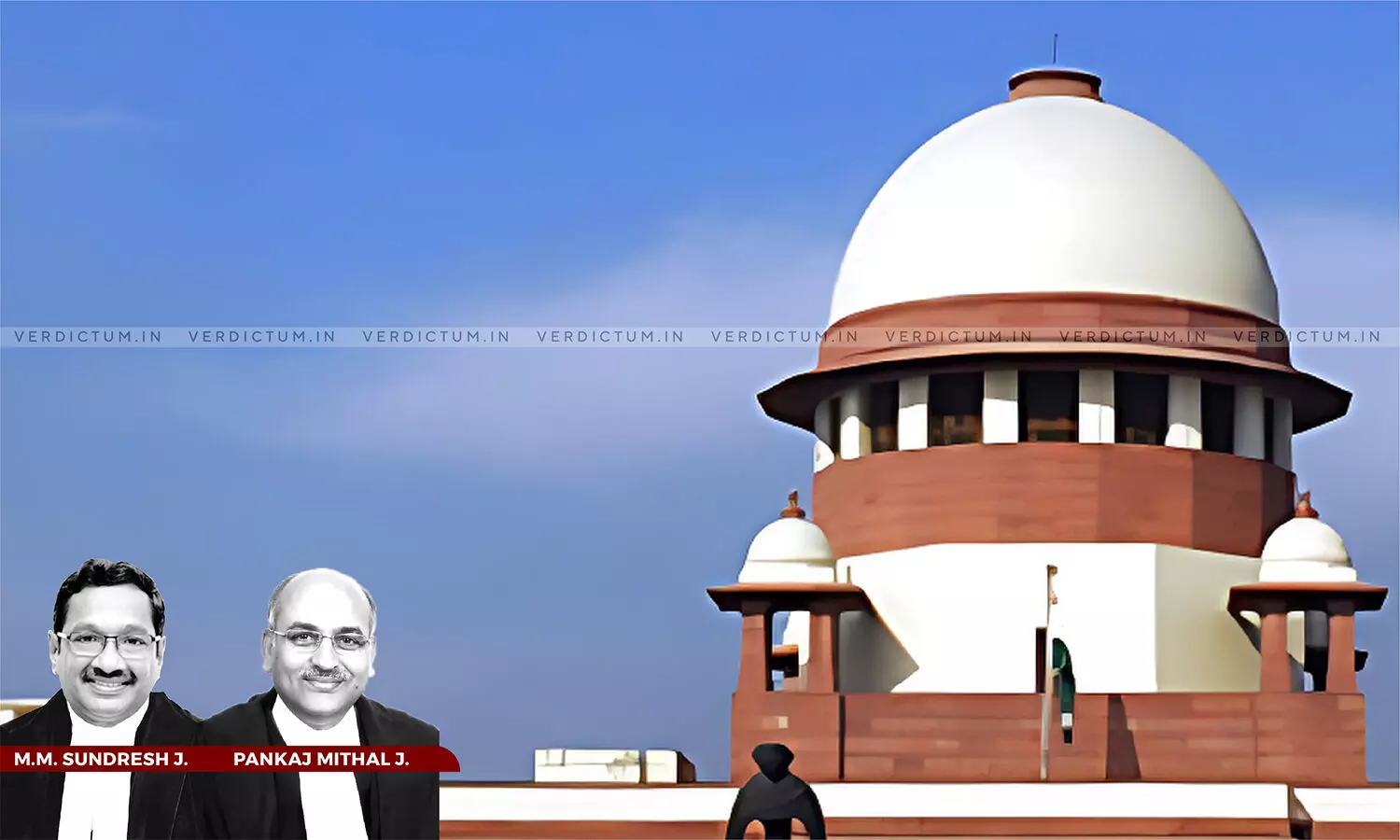
Surrounding Facts Must be Proved To Attract Section 106 Of Evidence Act: Supreme Court While Acquitting Convict In Murder Case
 |
|The Supreme Court has observed that conviction shall not be merely based upon suspicion, and to attract Section 106 of the Indian Evidence Act, 1872, the surrounding facts will have to be proved.
The Bench of Justice MM Sundresh and Justice Pankaj Mithal observed, “Thus, both the Courts have committed a serious error in rendering the conviction against the appellant No.2, merely based upon a suspicion…To attract Section 106, of the Indian Evidence Act, 1872, the surrounding facts will have to be proved. The question for consideration is as to whether the appellant No.2 had a role in the murder or not. Merely because she was quarelling with the deceased, one cannot say that she formed a common object with the appellant No.1. As against appellant No.1, there are adequate materials which have been taken note of by the trial Court.”
AOR Manjeet Kirpal appeared for the Appellants, whereas Standing Cousnel Vinayak Sharma appeared for the Respondent.
An appeal was filed by the Appellants who were convicted for the offence punishable under Section 302 read with Section 34 of the Indian Penal Code, 1860 (‘IPC’). Both the Trial Court and the High Court had concurrently convicted the appellants.
Appellant No.1 was the son of appellant No. 2, and he was released in pursuance of the remission policy. Both the appellants were charged and convicted for life. The father of appellant No.1 and husband of appellant No.2 had three wives. The appellant No.2 was the first wife, and the deceased was the third wife. The deceased was living with appellant No.2. In view of the third marriage between the father and the deceased, appellant No.2 had a serious grievance, in pursuance of which she was continuously harassing the deceased. This continued despite a Panchayat held.
Upon the receipt of the complaint, the police party came to the place of occurrence and found the room locked from inside. The room was broken open, and the deceased was found lying on the floor, with blood oozing from her nose. In pursuance of the arrest, a recovery of the clothes worn by appellant No.1 was made under Section 27 of the Indian Evidence Act, 1872. The recovered clothes were found with blood stains. The report of the chemical analysis indicated that the blood stains found on the clothes of appellant No.1 matched with those of the deceased. Accordingly, both appellants No.1 and 2 were charged. Appellant No. 2 was charged in view of the motive under Section 34 of the IPC.
The Counsel for the Appellant submitted that there was no material to implicate her in the offence said to have been committed, and even assuming the motive was proved, the same alone would not be sufficient enough to implicate her. He added that it might be true that she did not like the presence of the deceased, but the said fact alone would not constitute the offence. Even the chemical analysis report would, at best, be evidence to implicate appellant No.1.
Per contra, the State submitted that there was sufficient evidence to show that the relationship between appellant No.2 and the deceased was not cordial, coupled with the fact that the death occurred in the place in which she was residing. Therefore, an inference was rightly drawn against her.
“Suffice it is to state that there is absolutely no material to implicate the second appellant. There is also no evidence to show that she instigated and facilitated the offence by asking appellant No.1 to do so. Thus, in the absence of any material to implicate the appellant No.2, the conviction rendered by both the Courts is liable to be set aside. In such view of the matter, we are inclined to give the benefit of doubt to appellant No.2.”, the Court said.
Accordingly, the Court allowed the appeal insofar as Appellant No.2, i.e., the wife was concerned and was disposed of for Appellant No. 1-Son.
Cause Title: Balram & Anr. v. The State of Chhattisgarh
Appearances:
Appellants: AOR Manjeet Kirpal
Respondent: Standing Cousnel Vinayak Sharma, AOR Ravinder Kumar Yadav and Advocate Kritika Yadav